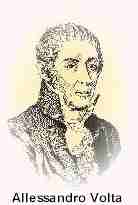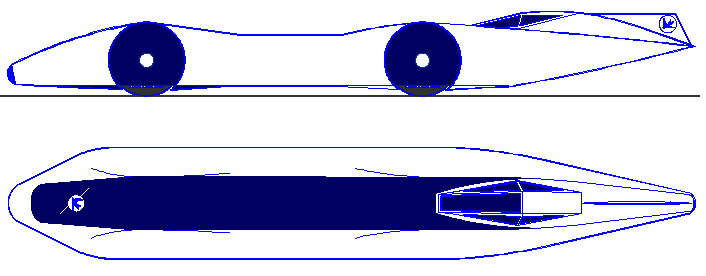|
BATTERIES HISTORY & DEVELOPMENT
|
|
|||||||||||||||||||||||||||||||||||
|
HOME | AUTOMOTIVE | BLUEPLANET | ELECTRIC CARS | FORMULA E | ENERGY | INSURANCE | INDEX | SOLAR CARS |
||||||||||||||||||||||||||||||||||||
|
Ancient electrical cells have been discovered in Sumerian ruins dating from around 250 BC. The first evidence of batteries comes from archaeological digs in Baghdad, Iraq. One of the first uses for batteries was to electroplate objects with a thin layer of metal, much like the process used now to plate inexpensive gold and silver jewelry. The early jar cells were found in Khujut Rabu just outside Baghdad and is composed of a clay jar with a stopper made of asphalt. Sticking through the asphalt is an iron rod surrounded by a copper cylinder. When filled with vinegar - or any other electrolytic solution - the jar produces about 1.1 volts.
Modern battery development dates as far back as the late 18th century. The cause was championed by the work carried out by Luigi Galvani from 1780 to 1786. Through his experiments Galvani observed that, when connected pieces of iron and brass were applied to frog’s legs, they caused them to twitch. However, Galvani thought that the effect originated in the leg tissue. Nevertheless, Galvani had laid the cornerstone for further developments in "voltaic" electricity.
Allesandro Volta
In
the years that followed other means of producing electricity were
invented, all of which involved the use of liquid electrodes. Those
developed by Bunsen (1842) and Grove (1839) were amongst the most
successful systems, and, were used for many years.
There are many types of battery but they all store energy as chemical potential - i.e. two chemicals which react in a solution when a circuit is made. There are primary and secondary cells. Primary cells use the chemical components of the battery itself to produce energy (this includes fuel cells). When the components are used the battery is discarded, except in a fuel cell where the fuel spent can be replaced. Secondary cells, or accumulators may be re-charged many times over.
The most common type of secondary cell is the "lead-acid" type used to start motor car engines. Taken to the extreme lead-acid batteries can produce a very high output for a short duration, an example of which is the Hawker SBS range of aircraft starter batteries. These batteries are the least expensive but have a limited life and store less energy per pound than other types.
Until a few years ago "nickel-cadmium" batteries were the most popular rechargeable small cells with a capacity measured in amp-hours, nearing twice that of lead-acid and 1.2 volts per cell. Nickel-cadmium is not so popular now as "nickel-metal-hydride" batteries were developed for automotive use and lately produced in popular AA sizes. NiMh cells are now very popular batteries for cameras, mobile phones, etc, with much better storage and 1.5 volts per cell and at about the same price as NiCads - but still more than lead-acid, until that is, the lifespan is taken into account when NiMh start to look attractive.
Polymer cells such as produced by Worley International offer still higher storage capacity per kilo but are much more expensive again. These cell are used for exotic applications such as solar car racing and land speed record vehicles.
A project to design and build a solar powered rickshaw is under way in Sussex, England. The brief is to replace the existing auto-rickshaws powered by inefficient 2 stroke engines, with electric rickshaws powered in the main directly by solar panels. In order to provide the necessary range for a whole days work, the solar rickshaw will need to store energy produced by its solar panels in a battery or other storage device. Although regenerating fuels cells might be a viable option in the future, at present this technology is not far enough advanced, and far too expensive in any event. However, Nickel Metal Hydride batteries offer one possible solution and Lithium Polymer cells another. These cells will reduce the mass of storage medium to acceptable levels and provide long term savings if running costs. we will report on this exciting development as news comes in.......................
British Battery Manufacturers Association (BBMA) Members:
Battery manufacturers, distributors, or large chain stores will often private label their batteries, for example, EverStart for Wal-Mart, DieHard for Sears and DuraLast for Auto Zone. The larger chain stores might have batteries with their private label made by several manufacturers depending on the location to reduce shipping costs or to provide more different types or sized of batteries. Below is a list in alphabetical order of the largest battery manufacturers, joint ventures, distributors, and dealers with some of their brand names, trademarks and private labels, hyperlinks to their Web addresses and telephone numbers. The manufacturers are in bold type. Ownership, supply contracts, branding, Web addresses and telephone numbers are subject to change. For example, EnerSys purchased Hawker and portions of Yuasa; Johnson Controls acquired the automotive battery portions of Hoppecke, Varta, Bosch and Grupo IMSA; and Yuasa and Japan Storage Battery have merged as GS Yuasa.
The manufacturer's code number will be on the battery and is only sure way of identifying the manufacturer. Ask the dealer who made the battery. Material Safety Data Sheets, (MSDS) can provide a useful source of information on the manufacturer of the battery. Manufacturers, joint ventures or distributors will sometimes have lines within a trademark or brand, for example, Bronze, Silver, Gold, Platinum, Titanium, Premium, Heavy Duty, Commercial, Standard, Plus, Turbo, Calcium, Classic, Maintenance Free, etc., for differentiating quality, features or warranty periods. They will also contract with other manufacturers to build special purpose batteries and batteries to complete their product lines that are not economically feasible to build themselves. A good manufacturers cross reference list for Sealed Lead-Acid (SLA) batteries can be found on Battery Solutions Web site.
Trademarks, brand names and registrations are owned by their respective companies and are as shown below to locate the most current information. Other good sources of battery manufactures is BaSyTec's Hyperlink list at http://www.basytec.de or the membership list of Associations, Business Directories or Hyperlink Lists found in the Battery References and Information Links List at http://www.batteryfaq.org. Answers to Frequently Asked Questions, (FAQs) and additional information on car, motorcycle, truck, marine, and recreational vehicle starting and deep cycle lead-acid batteries can be found at http://www.batteryfaq.org.
RACING DRIVERS INDEX
Please click on the links above to find out about these famous automotive makers. If your company is not included and you would like to be listed, please let us know.
UK VEHICLE INSURANCE ONLINE A - Z
No matter what car, van or bike you drive, we're all looking for great value and quality in our UK motor insurance? But who is the best - who is the cheapest and who offers the great service in the event of a claim?
See the insurance companies below who claim to offer competitive cover at sensible prices, our guide to the jargon and tips for cutting your quote - Good Luck:-
A taste for adventure capitalists
The world's fastest electric car: 350mph + using energy from nature. Featuring built in battery cartridge exchange, charged using renewable solar energy. Sponsors sought for the 2016 season.
|
||||||||||||||||||||||||||||||||||||
|
BLUEPLANET BE3 ELECTRIC | EDUCATION | ELECTRIC CYCLES | SOLARNAVIGATOR |
||||||||||||||||||||||||||||||||||||
|
The
content of this website is copyright © 1991 and 2013 Electrick
Publications. All rights reserved. The bluebird logo |
||||||||||||||||||||||||||||||||||||

